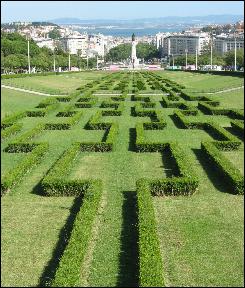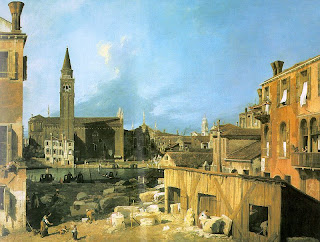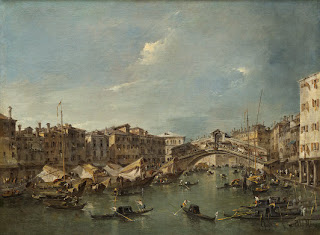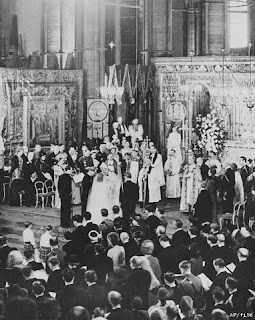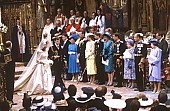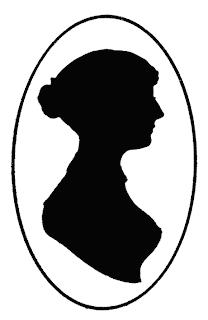Yesterday I wrote about Jane Austen in London correcting proofs for Sense and Sensibility. She wrote her letter of April 25, 1811, to her sister Cassandra who was staying at Godmersham in Kent, their brother Edward’s estate. Jane reports on the musical party given by her hosts in Sloane Street, her brother Henry and his wife Eliza, the former Comtesse de Feuillide.
“Our party went off extremely well. There were many solicitudes, alarms, and vexations, beforehand, of course, but at last everything was quite right. The rooms were dressed up with flowers, and looked very pretty. A glass for the mantlepiece was lent by the man who is making their own. Mr. Egerton and Mr. Walter came at half-past five, and the festivities began with a pair of very fine soals.
Yes, Mr. Walter — for he postponed his leaving London on purpose — which did not give much pleasure at the time, any more than the circumstance from which it rose — his calling on Sunday and being asked by Henry to take the family dinner on that day, which he did; but it is all smoothed over now, and she likes him very well….”
Sloane Street today is a busy thoroughfare but in Jane Austen’s day, it was on the edge of town, a newly developed residential area. In her letter to her sister Cassandra of April 18 , 1811, she mentioned that she and her sister-in-law Eliza would “walk to London” to buy decorations for Eliza’s musical party. On April 25, she went on:
“At half-past seven arrived the musicians in two hackney coaches, and by eight the lordly company began to appear. Among the earliest were George and Mary Cooke, and I spent the greater part of the evening very pleasantly with them. The drawing-room being soon hotter than we liked, we placed ourselves in the connecting passage, which was comparatively cool, and gave us all the advantage of the music at a pleasant distance, as well as that of the first view of every new comer.
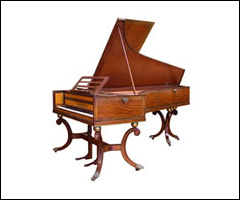 |
| Finchcocks Musical Museum Collection |
I was quite surrounded by acquaintance, especially gentlemen; and what with Mr. Hampson, Mr. Seymour, Mr. W. Knatchbull, Mr. Guillemarde, Mr. Cure, a Captain Simpson, brother to the Captain Simpson, besides Mr. Walter and Mr. Egerton, in addition to the Cookes, and Miss Beckford, and Miss Middleton, I had quite as much upon my hands as I could do.
Poor Miss B. has been suffering again from her old complaint, and looks thinner than ever. She certainly goes to Cheltenham the beginning of June. We were all delight and cordiality of course. Miss M. seems very happy, but has not beauty enough to figure in London.
Including everybody we were sixty-six — which was considerably more than Eliza had expected, and quite enough to fill the back drawing-room and leave a few to be scattered about in the other and in the passage.
Finchcocks Musical Museum concert
The music was extremely good. It opened (tell Fanny) with “Prike pe Parp pin praise pof Prapela”*; and of the other glees I remember, “In peace love tunes,” “Rosabelle,” “The Red Cross Knight,” and “Poor Insect.” Between the songs were lessons on the harp, or harp and pianoforte together; and the harp-player was Wiepart, whose name seems famous, though new to me. There was one female singer, a short Miss Davis, all in blue, bringing up for the public line, whose voice was said to be very fine indeed; and all the performers gave great satisfaction by doing what they were paid for, and giving themselves no airs. No amateur could be persuaded to do anything.
The house was not clear till after twelve. If you wish to hear more of it, you must put your questions, but I seem rather to have exhausted than spared the subject….
* Jane Austen and her niece Fanny, according to Deirdre Le Faye, had a nonsense vocabulary formed by putting the letter P in front of every word. The chorus words are actually, “Stike the Harp in Praise of Bragela.”
More information on the songs mentioned can be found in the notes to Letter 71 in LaFaye’s Jane Austen’s Letters. In the Biogrphical Index, there is material on several of the people mentioned, some old friends of the Austen family.
Now you know what music to have at your next Jane Austen Musical Evening. To see more about Finchcocks Musical Museum, click here.
